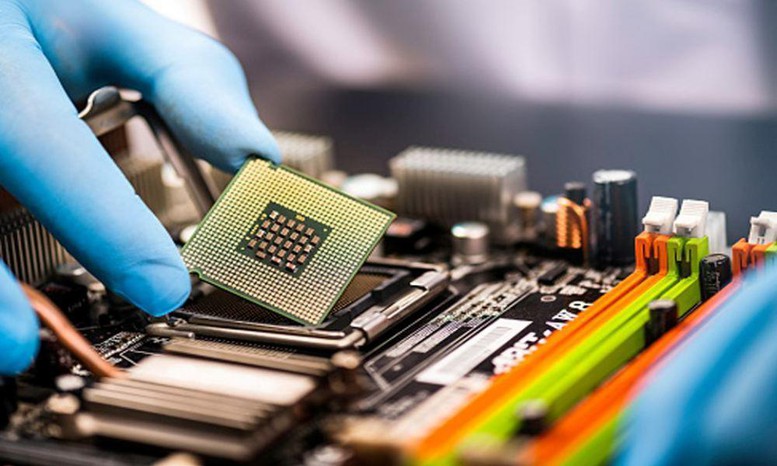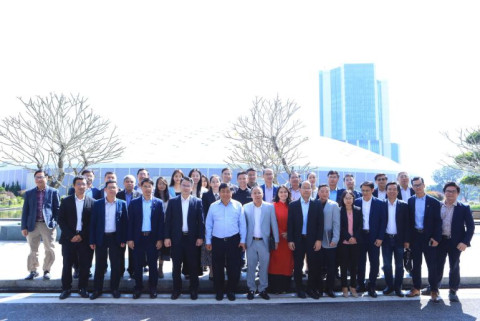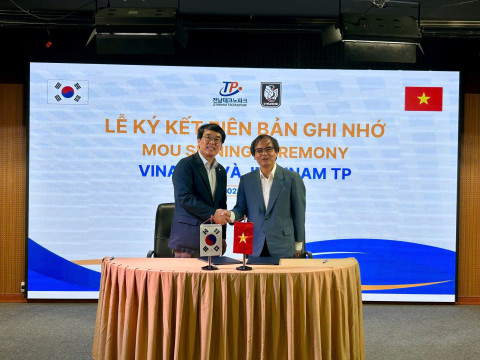Vietnam's Semiconductor Leap: Five Strategic Policies to Reach 2027 Goal
- 19
- Business
- 17:50 14/08/2025
DNHN - Vietnam has set an ambitious target: to manufacture "Make in Vietnam" semiconductor chips by 2027. This bold commitment marks a defining moment in the country’s high-tech trajectory, positioning Vietnam as a rising contender in the global chip race.
Vietnam Enters the Semiconductor Spotlight
"Vietnam is where South Korea was in the early 2000s, or Taiwan (China) before TSMC's global reign," says Dr. Nguyen Thuy Lan, strategic investment advisor. "If we act decisively, we can move from low-margin assembly to core technology leadership."
Today, Vietnam hosts over 170 semiconductor-related FDI projects with nearly USD 11.6 billion in committed capital. Major players such as Intel, Amkor, and Hana Micron have strategically planted their flags. Yet, most of this investment remains in packaging and assembly, with minimal breakthroughs in advanced chip design or fabrication.

Breaking the Bottlenecks
Vietnam faces three structural challenges:
- Capital Scarcity: Building a single semiconductor fab demands USD 5–10 billion. Current funding schemes fall short of this scale.
- Lack of Technology Transfer: Foreign investors tend to withhold intellectual property (IP) and core know-how, stifling domestic technological advancement.
- Talent Deficit: Only 23,000 semiconductor engineers are available nationwide. Vietnam needs at least 50,000 skilled engineers to build a full-stack R&D ecosystem. Education reform is the critical engine for long-term competitiveness.
A National Call to Action: 2027 Is Now
Prime Minister Pham Minh Chinh has declared 2027 a non-negotiable deadline for Vietnam's semiconductor ambitions. “We must act as one unit. Be swift, bold, and decisive. Sustainable results must follow,” he asserted.
All ministries, from Science and Technology to Finance, Education, Foreign Affairs, and local governments, have been mobilized to align infrastructure, policy, capital, and human resources.
The Five Breakthrough Solutions
Dr. Nguyen Thuy Lan proposes five catalytic policies to lift Vietnam into the global chipmaking elite:
National Semiconductor Development Fund
Seeded with at least USD 1 billion, this fund should attract both public investment and global venture partners such as Temasek, GIC, and SoftBank.
- Chip Design R&D Industrial Park
A dedicated innovation zone with tax-free equipment imports, 50-year land lease exemptions, and fast-track collaboration between Vietnamese startups and multinational chipmakers.
- Semiconductor Policy Sandbox
Pilot legal frameworks for IP, funding, and tech licensing to support experimentation by domestic firms.
- Mandatory Tech Transfer Agreements
Secure bilateral technology transfer commitments with the U.S. and South Korea, modeled on India’s partnership with the U.S.
- University-Based Semiconductor Training
Launch undergraduate programs in chip design from the first year, modeled after Taiwan’s Semiconductor Training Base, embedded in Vietnam’s top universities.
Global Endorsements
The Financial Times describes Vietnam as a promising semiconductor base, citing pro-investment policies and competitive operating costs. U.S. National Security Advisor Jake Sullivan has hailed Vietnam as a "strategic tech partner" in efforts to diversify global supply chains.
The Clock Is Ticking
Vietnam can no longer afford to sit on the sidelines. A missed 2027 deadline could mean exclusion from critical global tech supply networks.
As Dr. Nguyen Thuy Lan notes, “Only synchronized, decisive action across policy, funding, and talent can unlock Vietnam's semiconductor future.”
Vietnam has the vision. Now it needs the velocity.
Hoàng Lan
Related news
Đọc thêm Business
Connecting Leaders, Shaping the Future: Strategic Leadership Planning Meeting – CorporateConnections Hanoi A
"Your network is your most powerful flowing asset. It generates value, multiplies opportunities, and accelerates your influence across borders."
Innovative ESG enterprise: Trạm Xe Việt startup proposes solutions to build a green mobility ecosystem
As Vietnam commits to achieving Net Zero by 2050 and tightens emissions standards, the transportation sector faces unprecedented pressure to transform.
Deputy Prime Minister Nguyễn Chí Dũng: “The country’s major challenges weigh heavily on my mind — and we must resolve them together.
On the morning of November 26, 2025, Deputy Prime Minister Nguyễn Chí Dũng chaired a high-level working session at the National Innovation Center (NIC) in Hòa Lạc.
Unitsky String Technologies signs cooperation agreements with three Vietnamese partners, opening a new direction for smart mobility and sustainable development
The signing ceremony took place in Minsk, Belarus, on November 28, 2025.
Before the D‑day to abolish flat‑rate tax: Fear of technology and costs leave small traders struggling to adapt
From 1 January 2026 the flat‑rate tax regime will be abolished. Small business households will be required to declare tax based on actual revenue. MISA supports the transition with technology to help micro‑merchants adapt smoothly and transparently.
Vietnamese enterprises at a crossroads: the impact of a potential US–China deal
As the world closely monitors every shift in US-China relations, emerging signals of a strategic agreement between the two global powers are raising hopes for global economic stability.
HDBank: Impressive profit growth, leading in profitability and advancing international integration
Ho Chi Minh City Development Joint Stock Commercial Bank (HDBank, stock code HDB) announced its consolidated profit before tax for the first 9 months of 2025 reached VND 14,803 billion, marking a 17% increase year-on-year (YoY).
TNI King Coffee sued for over VND 5 Billion in unpaid debts
On October 21, 2025, the People’s Court of District 10 in Ho Chi Minh City officially accepted a civil lawsuit concerning a commercial contract dispute between TKT Vietnam Plastic Packaging Joint Stock Company and TNI King Coffee Co., Ltd.
VINASME and Jeonnam Technopark Sign MOU on technology cooperation, human resource training, and trade promotion
On October 15, 2025, in Hanoi, VINASME and Jeonnam Technopark (Korea) signed an MOU to promote trade, advance technology transfer, and develop human resources between enterprises of both nations.
Vietnamese entrepreneurs strengthen ASEAN connectivity in the digital iIntegration era
On the occasion of Vietnam Entrepreneurs’ Day (October 13), an international event themed “Integration – Innovation – Sustainable Development” was solemnly held in Ho Chi Minh City.











